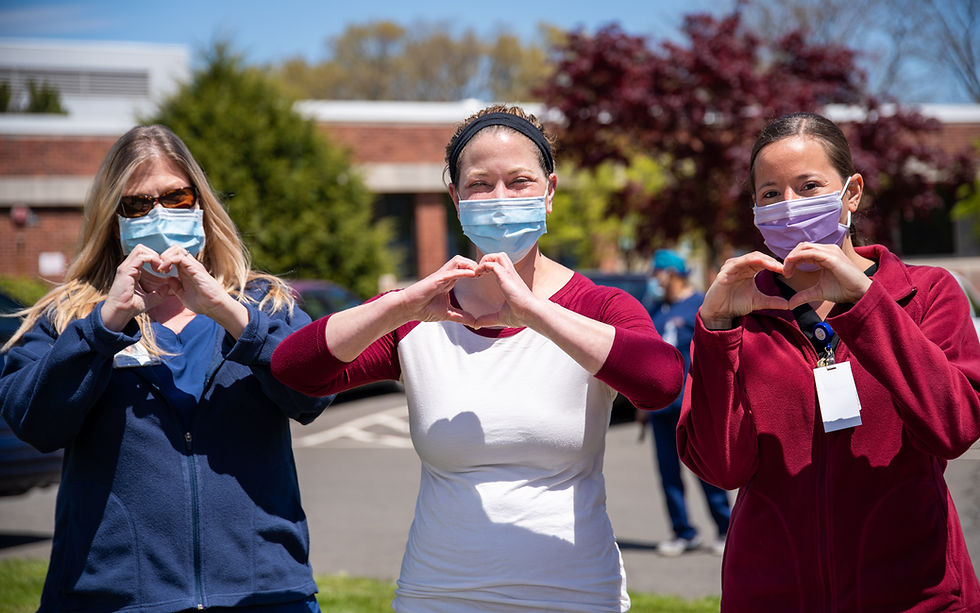Human Flourishing
- Oct 8, 2020
- 4 min read

One of the brilliant advances in the application of positive psychology to human flourishing relates to group performance and is a concept which emerged from a dynamic collaboration between two scientists, Marcial Losada and Barbara Fredrickson. This work was summarized in their 2005 paper: Positive Affect and the Complex Dynamics of Human Flourishing. Losada has made an inarguable case for the pivotal role of positive emotions in successful group performance concepts, which can be applied to group exercise settings in support of both individual and group flourishing.
Let’s start with the raw data:
In the 1990s, Losada and his assistants painstakingly coded every single statement, moment by moment in chronological order, made in videotaped meetings of 60 teams in a large international corporation who were crafting business missions and strategic plans. The coding tracked three dimensions, which Losada predicted would be vital and interdependent, building on each other in either an upward or downward spiral:
1. Was a statement positive or negative? 2. Was a statement self-focused or other- focused? 3. Was a statement based on inquiry or advocacy?
Independently, Losada also identified whether these groups were high, medium, or low performers based upon a number of critical success factors.
The Butterfly – a nonlinear dynamic system Losada validated a set of mathematical equations to capture the relationship among the three dimensions and calculated a new variable called connectivity, which measured how much each group member influenced the behavior of others (mutual influence) and how attuned and responsive group members were to each other. Losada ran the raw data through his mathematical model and voila, the butterfly graphs (Figure) came to life. When mutual influence reaches a critical level, a butterfly appears and grows.
Then Losada’s breakthrough came, inspired by Fredrickson’s work on demonstrating the point into a positivity ratio or tipping point of 2.9 to 1. A tipping point that leads to flourishing rather than languishing of groups is above a positivity ratio of 2.9 positive emotions to every negative emotion.
In the Figure, the first butterfly with the tall and wide wings is the data plotting of the high performance groups. The vertical axis of the left graph represents the level of positive emotions and you see that the high performance groups have high positivity ratios. Also on the left graph, the left half of the horizontal axis is a rating of open inquiry, while the right half is a rating of advocacy. The high performing groups’ butterfly has a wide wing span representing an outward focus and a broad and balanced range of inquiry and advocacy. For the exercise professional, this would represent creating an environment in which clients are encouraged to be creative, open-minded and supportive of one another if in a group setting.
The mixed performance groups are represented by the second butterfly, lower positivity levels (below the tipping point), a narrower range of inquiry and advocacy, along with a more restrictive emotional space and less connectivity. For the exercise professional, this would represent creating an environment in which there is little emotional connection with and between represent the languishing of low performance groups. No butterfly here, not even a little one. They are stuck in a cocoon of restrictive, distrustful, and cynical self-absorbed advocacy from the start, losing behavioral flexibility all together. For the exercise professional, this would represent creating an environment in which the agenda of the exercise expert takes priority of the needs of the client or group.
Here are some of Losada’s discoveries about groups that also can be applied to the exercise professional in relationship with a client or group:
1. Start by creating a positive and appreciative dynamic. Begin each session by asking about client successes, best experiences, and new hopes. This positive start builds the positive emotions needed to address challenges later.
2. Allow yourself to open and broaden. Be aware of your limiting bias- es and assumptions about client stereotypes. Be curious about what’s new – what can you learn from each client and their experiences?
3. Get out of the way of your personal need to control outcomes. Invite your client to explore her/his own motivation and agenda for change.
4. Keep the ratio of positive and negative topics above 3:1. Make sure that 75% of your time together is focused on positive topics, asking positive questions, providing affirmations, exploring strengths, new possibilities, or success stories, and 25% is focused on more negative topics such as challenges and concerns.
5. Be attentive to and build on the contributions and synergy of every- one’s strengths. Learn about your clients strengths and explore how to leverage those strengths for greater success. One excellent tool for identifying strengths is the Values in Action Character Strengths Survey (www.viacharacter.org).
6. Balance authentic, open-minded inquiry and exploration with advocacy of what you believe is the best approach. Your expertise is valuable but your client may learn more from self-awareness and insight that emerges from your carefully chosen questions and reflections.
7. Grow perspectives to something bigger than self. Support clients in identifying how their individual changes will help them make a larger contribution, which they value personally, to their friends, family, col- leagues, and the world.
8. Allow the system to be chaotic in the moment in order to flourish and easily absorb bumps and blows over time. Bring a belief in your client’s resilience to bumps on his or her path and in your working relationship. Engage the client in learning from every outcome, even when a goal is not met, by viewing every experience as a win/learn opportunity rather than a win/lose situation.
Watch and enjoy how the butterfly combines beauty and subtlety to create an unexpectedly wonderful impact on your individual clients and groups.
Originally published in Coaching Certified News Coaching Column




Comments